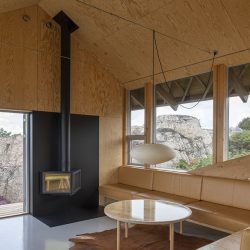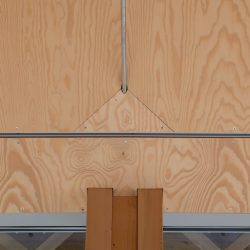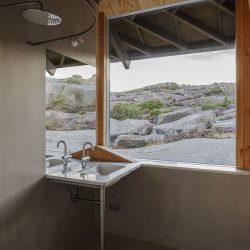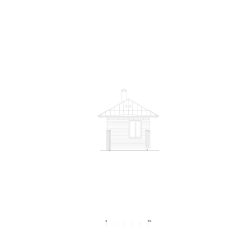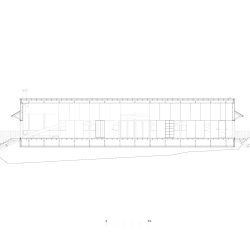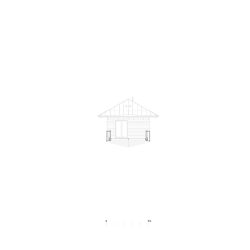
Manthey Kula . photos: © Mikael Olsson
The house is an exercise in sustainable approach to architectural design: The effort of finding a way to avoid irreversible traces of the building process on the land resulted in an extraordinary timber structure that produces remarkable spatial qualities.
The house is situated on the island of Hamburgö on the western coast of Sweden. In order not to destroy the untouched terrain by excavation, blasting or landfilling, the house is designed as a bridge spanning 29 meters from one bedrock plateau to another, across boulders left by the glacier more than 12 000 years ago.
The structure consists of two laminated timber arches transported to the site by helicopter and bolted to steel brackets carefully drilled into the bedrock. Two delicate steel trusses brace the building against the heavy coastal winds and allow for a third connection to the terrain. The timber structure, which rests on only four poins of foundation, requires several special tectonic solutions such as diagonal joists, hanging columns and details that adapt to the geometry and movement of the structure. Suspended from the arches the house floats in the beautiful, vulnerable landscape.
The interior of the house is characterized by the ever-present, ever-changing nature, and of the slender loadbearing arches that give character to every room. 12 sliding doors provide functional flexibility and unexpected visual passages through the plywood clad spaces. The house is on grid; infrastructure and geothermal heating is brought to the structure through a non-load bearing “inverted chimney”.
The exterior materials are chosen with regards to the challenge of the coastal climate; timber treated with iron sulfate, windows and doors covered in raw aluminum, fittings and structural elements in stainless steel, the roof cladding in zinc. All materials are to age naturally without further surface treatment for the house to become part of nature.
_












